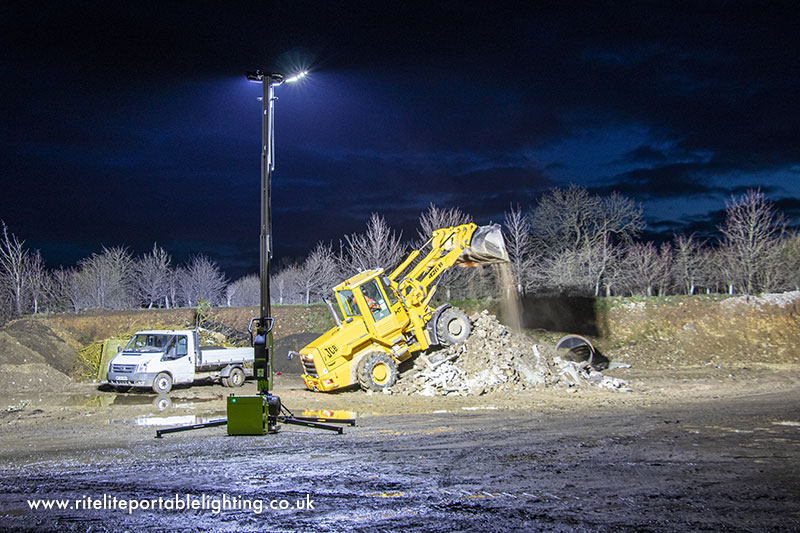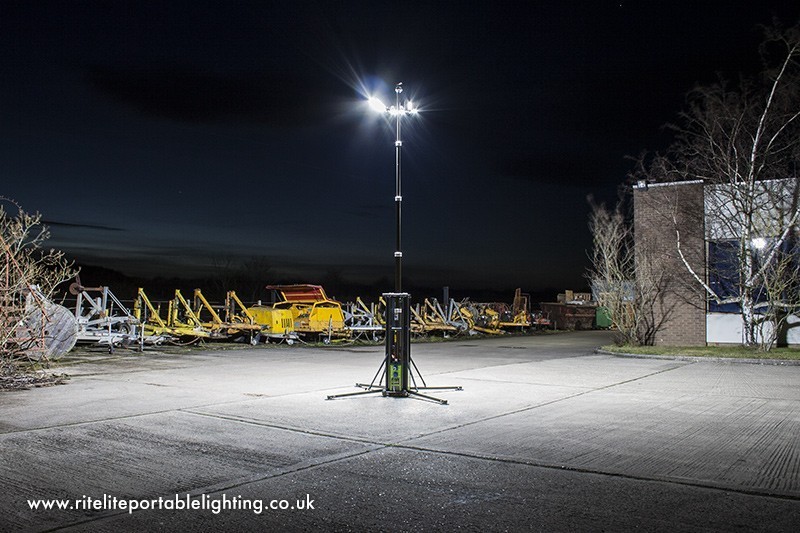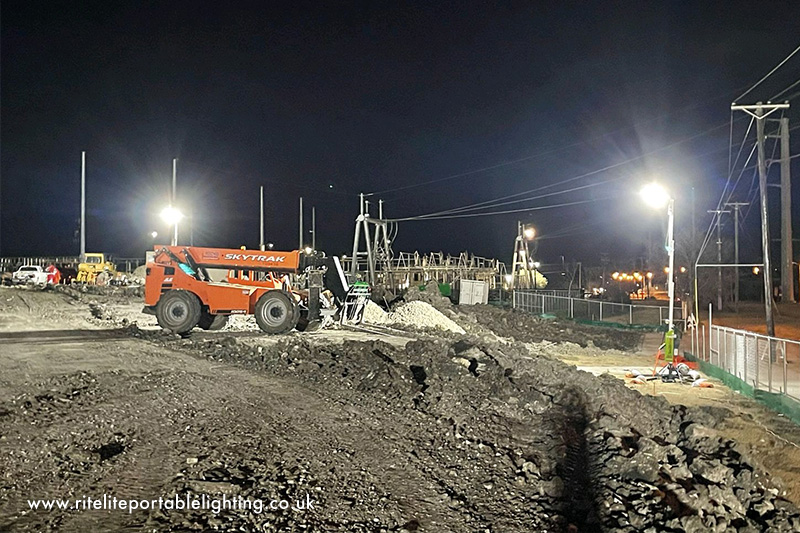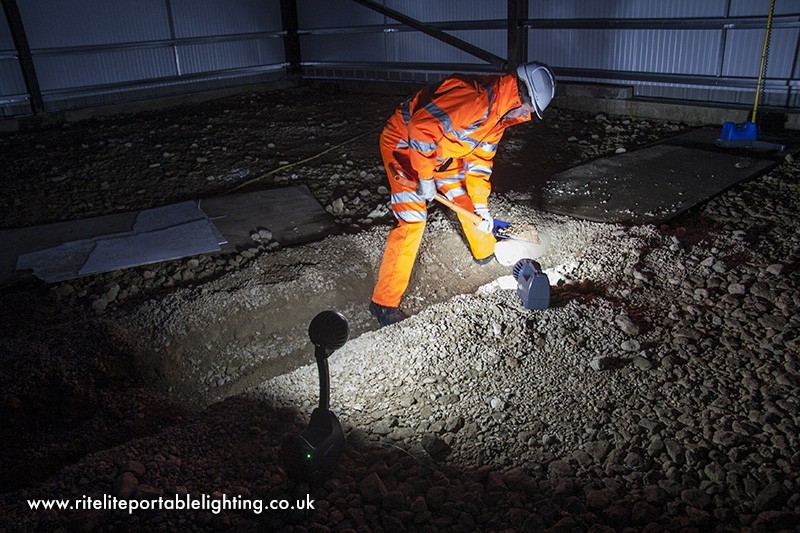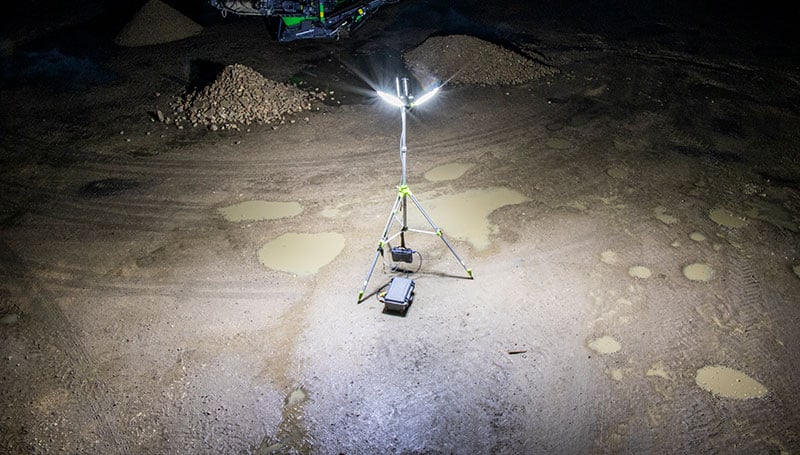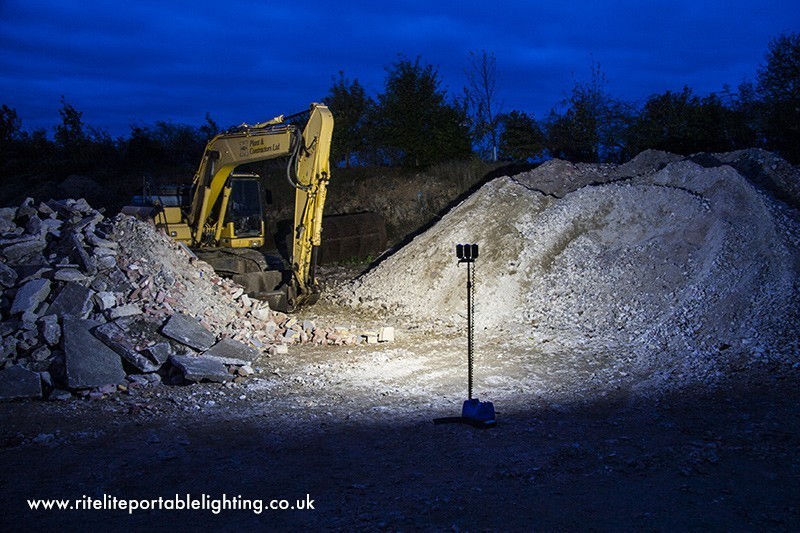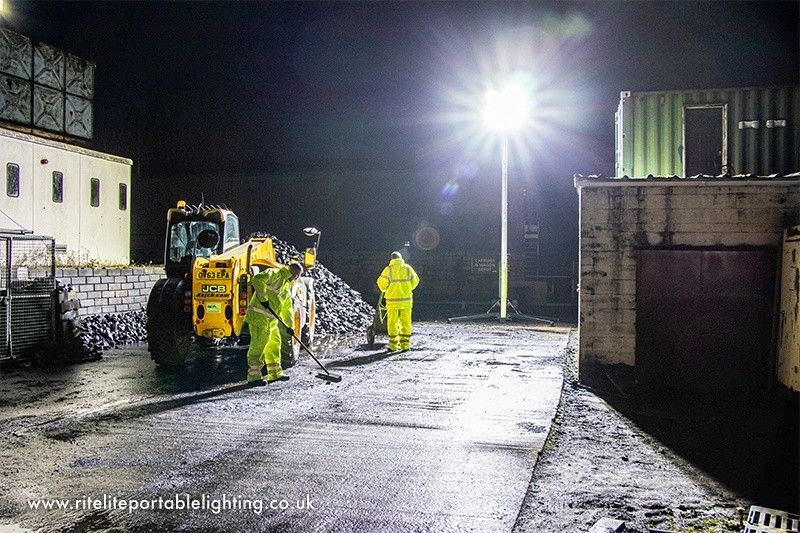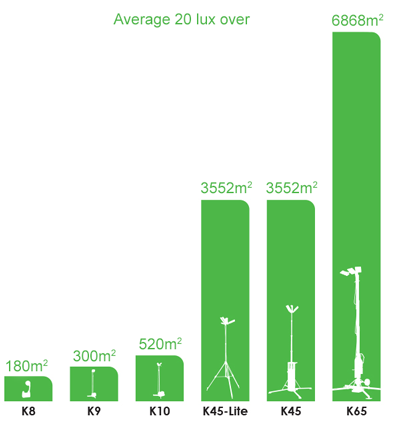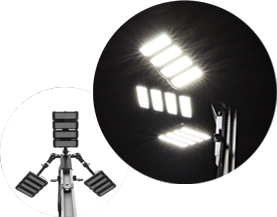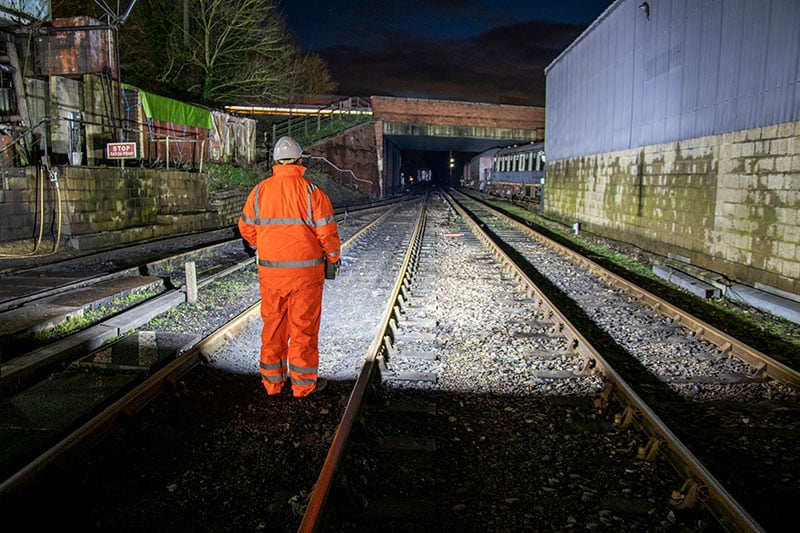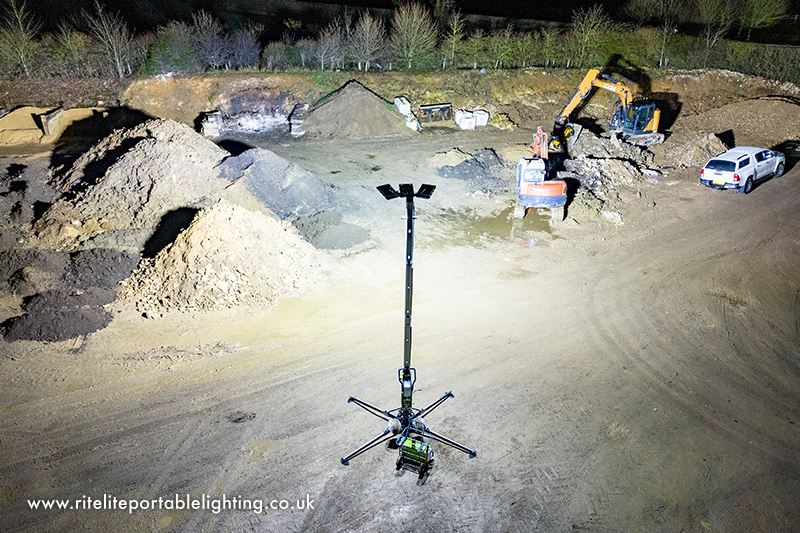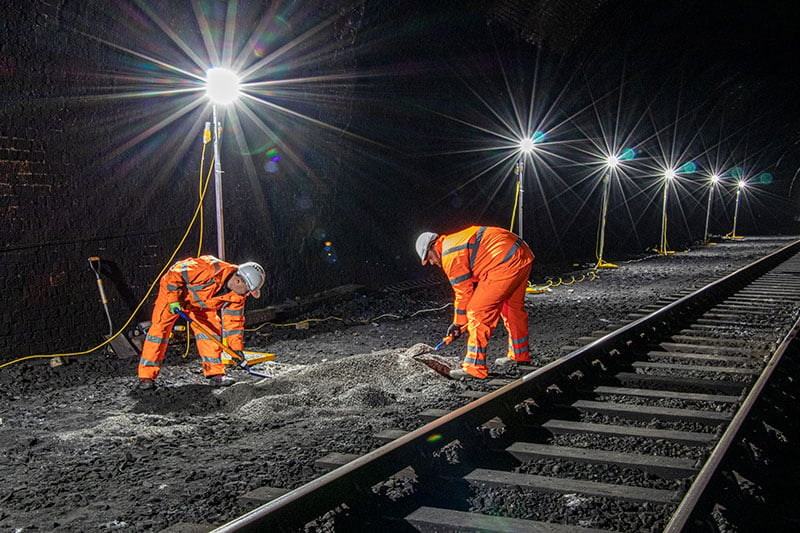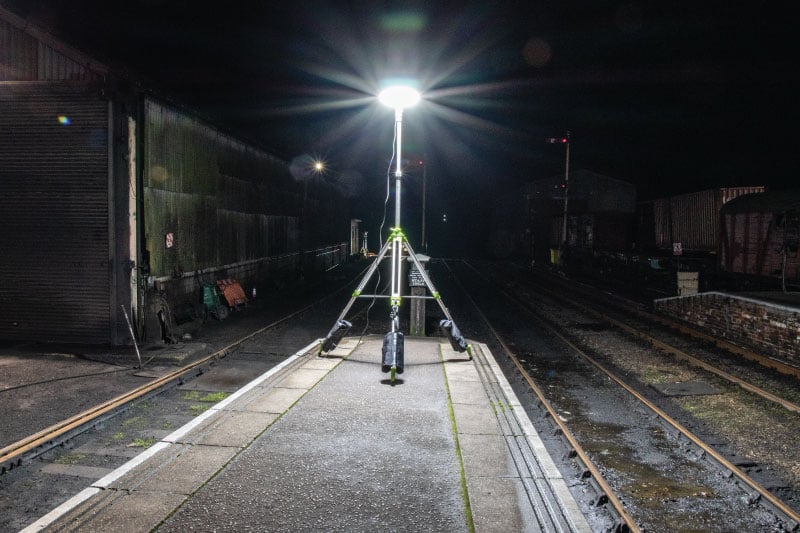The importance of adequate lighting on construction, building and industrial sites
The Heath and Safety Executive states the following regarding Site Lighting
Every part of a construction site that is in use should, as far as possible, be arranged so that natural light is available for people to see to do their work and move about the site safely. Where natural light is inadequate or not available, artificial lighting should be provided.
Why is adequate lighting so important on construction and building sites?
What is adequate construction site lighting?
Different tasks will require different levels of light. The HSE Lighting at work (hse.gov.uk) guidance recommends the following levels
From HSE guidelines View PDF Here
| Activity | Typical locations/types of work | Average illuminance (lux) 1x | Minimum measured illuminance (lux) 1x |
|---|---|---|---|
| Movement of people, machines and vehicles(a) | Lorry park, corridors, circulation routes | 20 | 5 |
| Movement of people, machines and vehicles in hazardous areas; rough work not requiring any perception of detail | Construction site clearance, excavation and soil work, loading bays, bottling and canning plant | 50 | 20 |
| Work requiring limited perception of detail(b) | Kitchens, factories assembling large components, potteries | 100 | 50 |
| Work requiring perception of detail(c) | Offices, sheet metal work, bookbinding | 200 | 100 |
| Work requiring perception of fine detail(d) | Drawing offices, factories assembling electronic components, textile production | 500 | 200 |
(a) Only safety has been considered, because no perception of detail is needed and visual fatigue is unlikely. However, where it is necessary to see detail to recognise a hazard or where error in performing the task could put someone else at risk, for safety purposes as well as to avoid visual fatigue, the figure needs to be increased to that for work requiring the perception of detail. The CIBSE Code for lighting 4 gives more information and recommendations based on scientific knowledge, practical experience, technical feasibility and economic reality.
(b) The purpose is to avoid visual fatigue; the illuminances will be adequate for safety purposes
(c) The purpose is to avoid visual fatigue; the illuminances will be adequate for safety purposes
(d) The purpose is to avoid visual fatigue; the illuminances will be adequate for safety purposes
The CIBSE Code for Lighting goes even further:
| Activity | Minimum maintained mean illuminance (1x) | illuminance uniformity (minimum/average) | Typical applications |
|---|---|---|---|
| Safe pedestrian movement in low risk areas | 5 | 0.25 | Industrial storage areas with only occasional traffic |
| Safe movement of slow vehicles | 10 | 0.4 | Open storage areas served by forklift trucks |
| Safe movement in medium risk areas | 20 | 0.4 | Vehicle storage areas, caontainer terminales with frequent traffic |
| Normal traffic | 20 | 0.4 | Road lighting in container terminals, marshalling yards |
| Very rough work | 20 | 0.25 | Excavation and site clearance |
| Rough work | 50 | 0.25 | Handling timber |
| Safe movement in high risk areas | 50 | 0.4 | Critical area within chemical plants, oil refineries etc |
| Normal work | 100 | 0.5 | Brick laying, carpentry |
| Fine work | 200 | 0.5 | Painting, electrical work |
Table 24.1 Illuminance recommendations for exterior workplaces. Source: The SLL Lighting Handbook, 2018
What must construction and industrial site planners consider when planning the lighting requirements for the site?
Lighting should be chosen that will not:
Lighting solutions chosen should:
How do Ritelite Lighting products meet the requirements for Site Lighting?
All Ritelite lighting products are designed to be robust enough to cope with the ruggedised environment of a work site; to meet the requirements of site lighting as detailed above and to provide solutions for every construction and industrial lighting temporary lighting application. All Ritelite products use LED technology offering much higher performance in terms of lumen output to energy consumption than metal halide, sodium or compact fluorescent lights. LED lights are able to operate at lower temperatures as well as running cooler and offering immediate restart than previous temporary lighting technologies. Importantly all Ritelite products meet and surpass the adequate lighting guidelines laid out by the HSE and CIBSE guidelines quoted above.
All Ritelite Construction & Industrial LED lighting solutions are uniquely designed to:
FOCUSED LIGHT
Focus all the light on the required work surface with bespoke beam controlled lensing ensuring glare and light pollution are minimise.
EFFICIENT
Use high quality LED technology ensuring the lights are as efficient as possible maximising energy savings and duration of battery life whilst providing ultra bright high powered LED light.
VERSATILE
Be flexible and versatile enabling them to be used in multiple locations across a work site both indoor and outdoor. Portable and mobile, compact to store and transport.
SILENT RUNNING
Be able to be operated silently either with inbuilt highly efficient lithium batteries or via the RITE-POWER portable battery generators.
RUGGED
Waterproof, Dustproof & shatterproof – designed for the harsh working environment of the construction and industrial industries.
BUILT TO LAST
High quality – built to last and continue to perform exceptionally for many years
Ritelite Product Solutions for Construction Site Lighting

